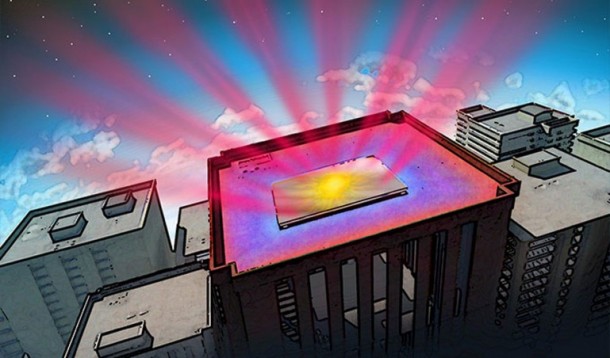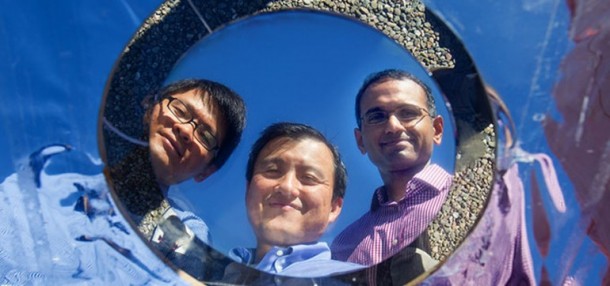Were you aware of the fact that the traditional air conditioning approach is consuming 15% of the total energy in the US? This simply tells us the heavy price we pay every year to keep our buildings cool. Stanford University’s team of engineers has come up with a new approach that involves the use of an ultra-thin and multi-layered nano-photonic material, which is capable of reflecting the heat away from the building and can also direct the heat from inside into the space, thus cooling down the building and planet.
There are three ways through which heat is transferred; conduction, convection and radiation. The Stanford team that was led by Professor Shanhui Fan, an electrical engineer, came up with a coating that is capable of handling infrared radiation and the sunlight in a way that it reflects them away akin to a mirror and also helps in radiating the building’s inner heat to the space. The team has named the process as Photonic Radiative Cooling.
The process uses a coating created from a mixture of silicon dioxide (SiO2) and hafnium oxide (HfO2) placed onto a thin layer of silver. There are seven layers in total and formed in a way that they measure in at 1.8 microns thick. According to the team, this combination of layers is thinner than the thinnest aluminum foil. However, being this thin doesn’t let it sabotage the work it has been assigned; the material is fully capable of reflecting the sunlight while conducting infrared rays.
The coating, in essence, works like a balance sheet pertaining to thermal properties and is running on a deficit. What happens is that this coating reflects the sunlight away and also directs the internal heat outward, thus cooling down the building. The team has tinkered with the coating so that it emits infrared frequencies, which do no resonate with the air around the building and are directed out into the atmosphere. This cools the earth, on a minute level though.
As per the research team, the tests have indicated that the coating can reflect 97% of sunlight and when combined with the awesome photonic radiative cooling, the overall temperature drop inside the building is 5° C. The team is working on bringing a coating that can meet the size requirements and perform equally well in the practical world. As of now, the coating is the size of a pizza and has been tested in lab only. According to Professor Fan, “Every object that produces heat has to dump that heat into a heat sink. What we’ve done is to create a way that should allow us to use the coldness of the universe as a heat sink during the day.”
Pretty cool, isn’t it?


